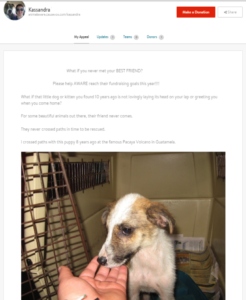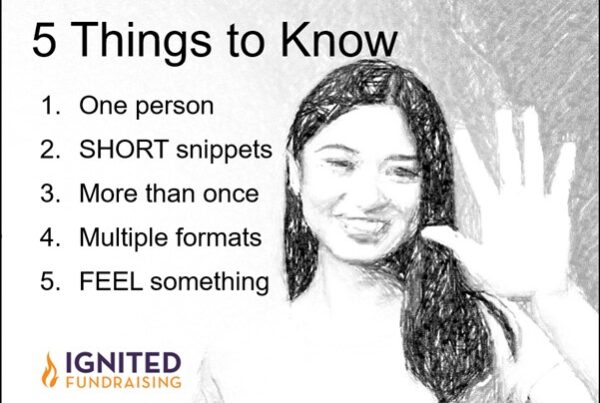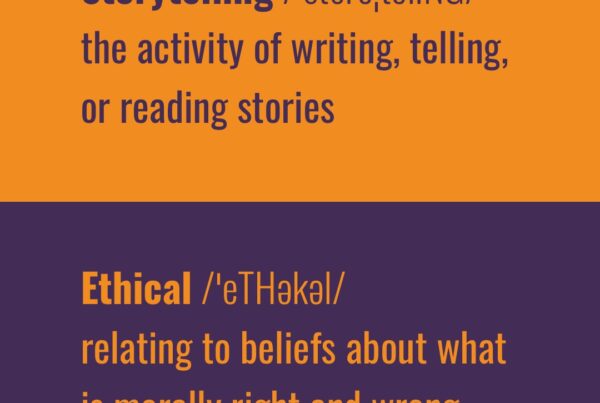This week I’m delighted to share this fun and informative guest post about donor stories by Noah Barnett, Growth Marketing Lead at CauseVox. Be sure to check out the link to the 60-day year-end fundraising plan and checklist at the bottom of the post.
At CauseVox, we’re believers in the power of story-driven fundraising. We’ve put storytelling at the center of our online fundraising platform because we know stories can change the world, and your fundraising campaigns.
You tell a lot of stories about your cause. Still, there may be one type of story you’re overlooking– your donor’s story.
Collecting donor testimonials is a struggle for many nonprofit fundraising folks anytime of year, and the fact that donor stories are important doesn’t make them any easier to get ahold of, or magically give you extra time to collect them. This becomes even more pressing at the end of the year, when you’re more than usually busy.
But donor stories can be a powerful addition to your year-end fundraising. So let’s look at a couple ways to collect them that don’t overwhelm your already full calendar.
Donor Stories: A Peer-to-Peer Appeal
Donor stories often lack the drama and excitement of client stories, but their power lies in their personality. Donor stories inspire prospective donors by offering a role model, a real flesh-and-blood person who cares about your cause. Fundraising professional Vanessa Chase Lockshin points out that a donor story, in it’s essence, is a peer-to-peer appeal.
At CauseVox, we see the way donor stories inspire all the time–it’s the heart of our personal fundraising pages. A person who cares about the cause explains why they support it, and asks others to do the same.
Check out World Bicycle Relief’s donor story page. They’ve told the stories of a diverse array of people who’ve fundraised on their behalf–from children to families, to professional cyclists. As you scroll through the stories, you’re likely to encounter someone like you–this helps you see yourself as a donor.
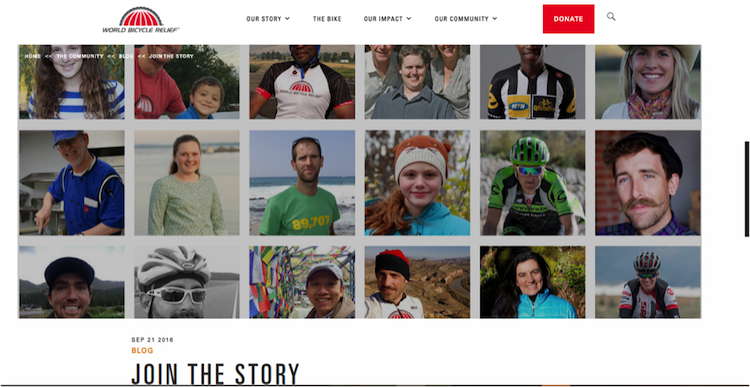
Storytime: Collecting Donor Stories
I like to think of story collection as a process that can be approached two ways–actively and passively. Each has advantages and disadvantages, and the ideal story collection process incorporates both.
Active Story Collection: Go Get The Story
When you are actively collecting stories, you, the fundraising professional, are driving the process. You do this by choosing donors to talk to, and asking them questions.
Pros Of Active Story Collection:
- It can be fast–If you know you’ve got a good donor to talk to, it can be a simple as picking up the phone.
- It’s personal–Donors know you thought of them specifically as a human being, rather than a vague entity.
- Since you’re asking the questions, you can get the kind of story you need for your campaign.
Cons of Active Story Collection:
- You’re limited to donors you suspect have a good story. This keeps any unknown stories off your radar.
- Some donors will turn you down.
- The timeline can be set back by donors’ schedules.
Tips for Good Active Story Collection:
- Ask specific questions.
“What is it about X organization that keeps you giving?”
“What motivated your first gift?” - Ask questions with emotional content, rather than only factual or logic-based questions.
“What part of our mission are you most excited about?”
“Why do you care about X cause?” - Explain what you’re hoping to do with the story.
If donors know your goals for the piece, they may be able to think more specifically about their answers. - Ask open-ended questions whenever possible.
A “yes” or “no” doesn’t do much for storytelling. Try questions that invite an answer, like:
“What interests you in X cause?”
“What do you think is the most important thing X organization does?”
“What has your experience with X organization been like?”
“What do you think people need to know about giving to X organization?” - When you’re done with questions, give the donor the opportunity to tell you things you didn’t ask.
Passive Story Collection: Let The Stories Come To You
Passive story collection involves building some kind of story-collecting device and leaving it open for anyone to tell their story. Good story-collecting devices include:
- Online forms
- Adding a “Why do you give?” question your donation paperwork
- Putting out a general “We want to know why you give” call on social media
- Adding a “Tell us why you give” request to any donor profiles you publish in your newsletter
- Putting up an “I Give Because” bulletin board in your lobby, with space for donors to add their stories.
Pros Of Passive Story Collection:
- Anyone can do it, so you’ll hear stories you might not have known about otherwise.
- Stories come to you, you don’t spend time pursuing them.
- Potentially allows you to get to know a broader range of donors.
Cons Of Passive Story Collection:
- Stories come in as people send them, not on your schedule.
- Stories may not fit with your desired fundraising narratives.
- With greater automation, there’s a danger of your donors feeling less special.
Tips For Good Passive Story Collection:
- Feature your story collection device prominently.
- Provide an example of the kind of donor story you’re looking for.
- Follow up personally.
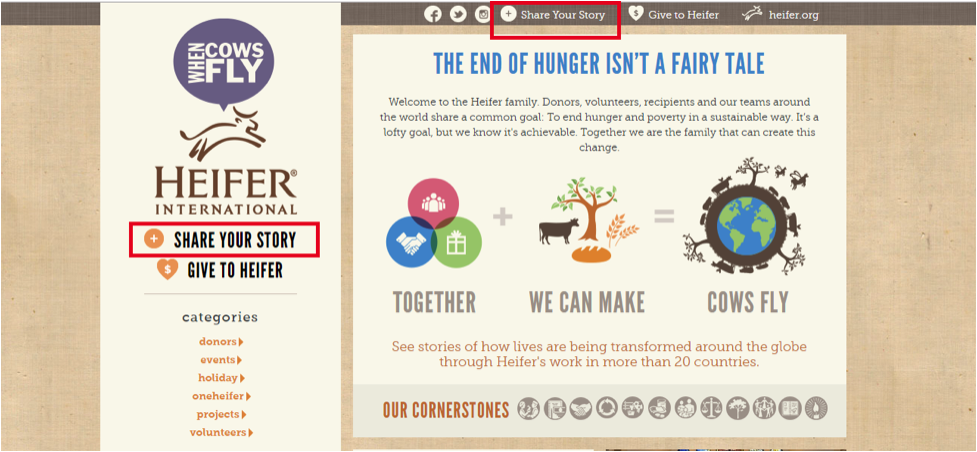
The Best Of Both Worlds
You don’t have to choose one method–you can do both. For your year-end campaign, you’ll want to actively pursue donor stories to share, but mix in a passive approach, too.
Most nonprofits are already communicating with regularly with their donors during year-end, so adding a story-collecting device to your donation process, or putting a storytelling form on your website during this time may net you some good stories to use now or later in the year.
To get ahead of the oncoming year-end season, check out our 60-Day Year-End Nonprofit Fundraising Plan +Checklist. It offers a step-by-step approach to every aspect of your campaign.

Noah Barnett is the Growth Marketing Lead at CauseVox and host of the Rally & Engage podcast. Prior to CauseVox, Noah spent six and half years in fundraising and marketing leadership roles at World Help and The Adventure Project. He knows firsthand the challenges nonprofits face, and is passionate about equipping them with the resources and insights they need to rally people around their cause.

